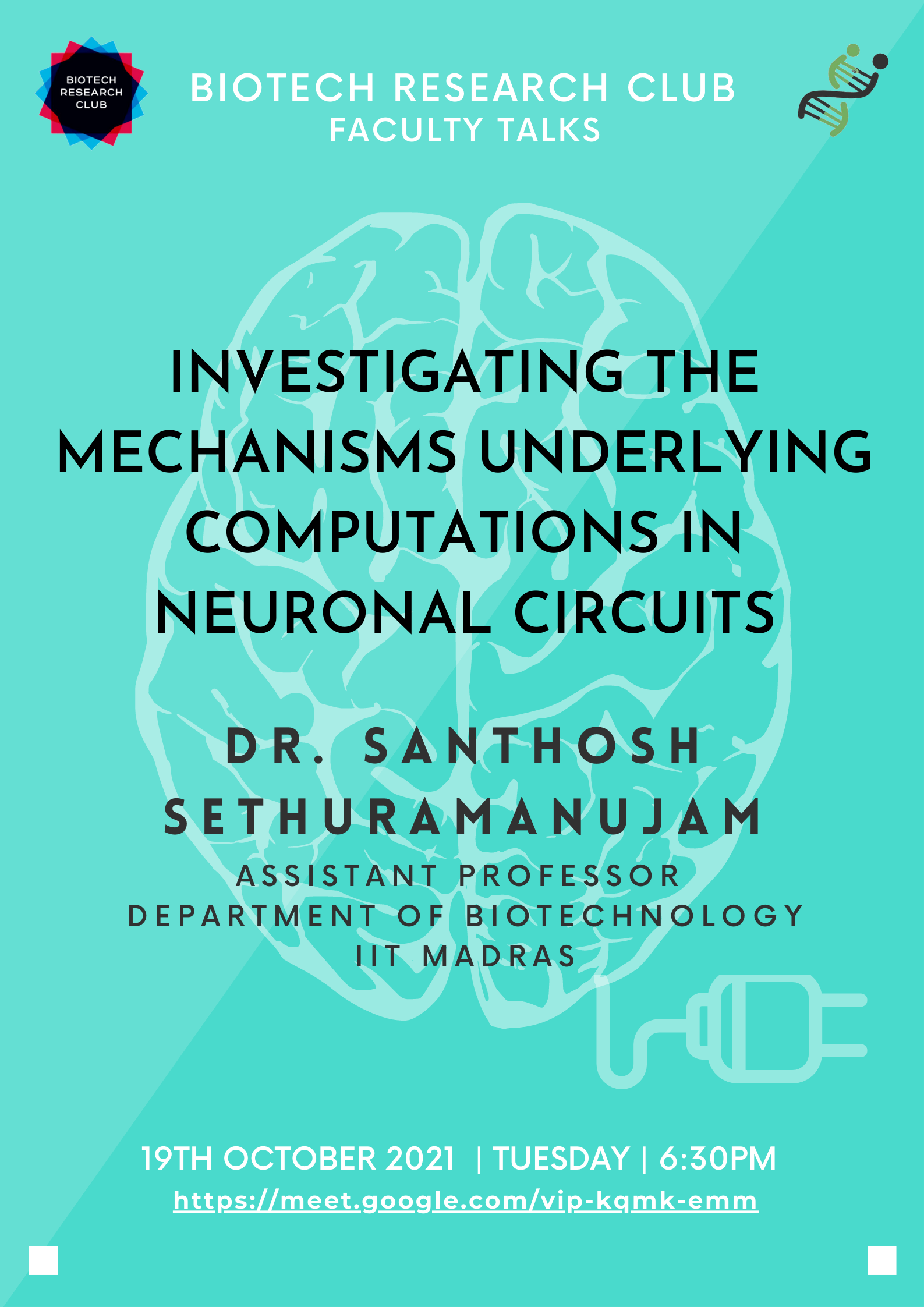Investigating the mechanisms underlying computations in neuronal circuits

Abstract
The brain is the most complex structure known to man. Nevertheless, given the global burden of neurological disorders, understanding how this structure works is the need of our times. My work aims to understand brain function by examining the underlying neuronal circuitry, in particular, how they perform computations. A typical neuronal circuit is composed of atleast a dozen different types of neurons. What is the role of each neuronal type in the circuit? And what are the mechanisms that enable the neuronal type to perform its role? These are the questions that have driven my research career. In this session, I will start with a brief introduction on how we think circuits process information, using the retina as a model system. Then, I will explain how new technologies help in revealing the mechanisms underlying the computations performed by circuits. Finally, I will touch upon how understanding these circuit properties will likely help in revealing the mechanisms underlying neurological disorders.
Biography of the speaker
Santhosh completed his B.Tech in Industrial Biotechnology from Alagappa College of Technology, Chennai. Upon completing his degree, he joined as a project assistant at the National Brain Research Centre, Gurgaon. He then moved to the State University of New York at Buffalo, to pursue a PhD in neuroscience, under the guidance of Prof. Malcolm Slaughter. His thesis work investigated the synaptic mechanisms regulating the visual sensitivity of retinal ganglion cells. For his post-doctoral work, he moved to the University of Victoria, to work with Prof. Gautam Awatramani. Here, using state-of-the-art tools—like optogenetics and two-photon imaging techniques—he investigated the mechanisms that facilitate the direction-selective computation in the retina. Now, he has joined IITM’s biotechnology department as an Assistant Professor, where he will continue to pursue his research interests in understanding how neuronal circuits function.